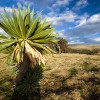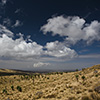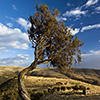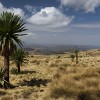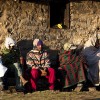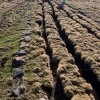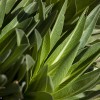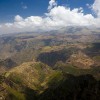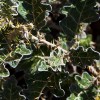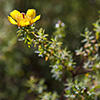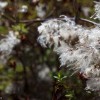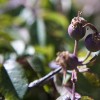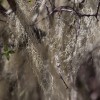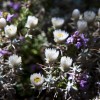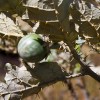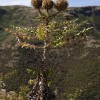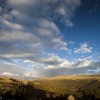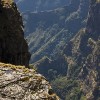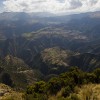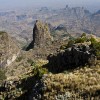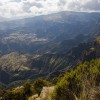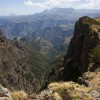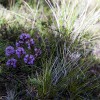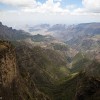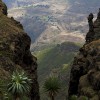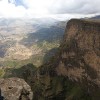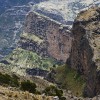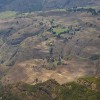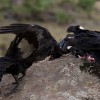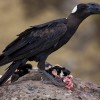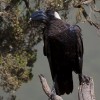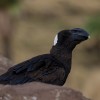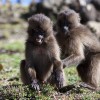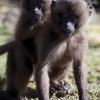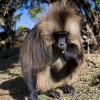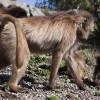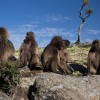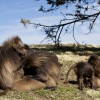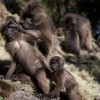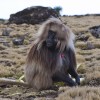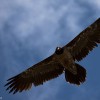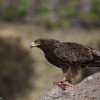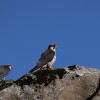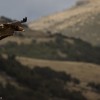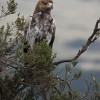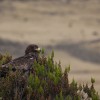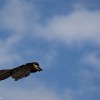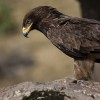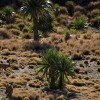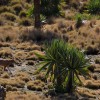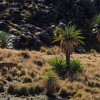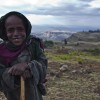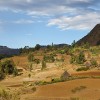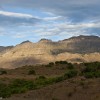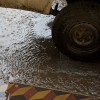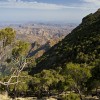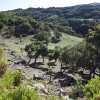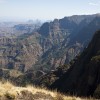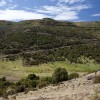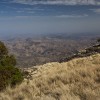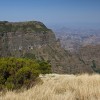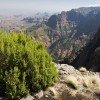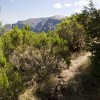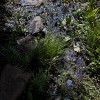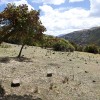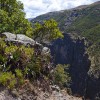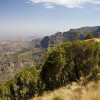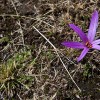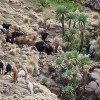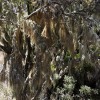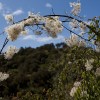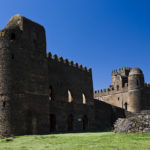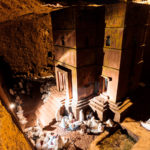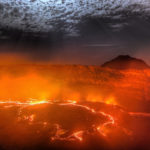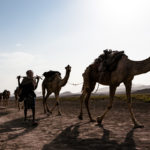On top of Africa – The Ethiopian Highlands
The Abyssinian highlands are the final stop for the cloudy water mass that finally feeds the source of the legendary Blue Nile. Its most dramatic region is the area around the Simien Mountains, whose volcanic origin is letting plants thrive and prosper that well that even baboons convert to vegetarianism. At every step done the scent of wild Thyme wafts up your nose and from time to time several thorns fondly hook into your upper arm. Hiking on an altitude of 4000m, you will quickly find yourself at eye level together with the colossal Lammergeier or majestic eagles and maybe there is even a chance to have a glance at the unique and very rare Ethiopian wolf.
On time at 9 o’clock the rain is setting in. And if it doesn’t start at 9, then surely it doesn’t get later than 10. Fortunately the speech is about the Ethiopian way to tell the time. The Ethiopians are a bit different in terms of time check. They’ve got 13 instead of 12 months and when they say 9, they actually mean 3 o’clock. Hence hikers have to prepare for rain only in the afternoon hours.
In the months before rainy seasons it can bucket down though. Short, heavy and very intense rain showers can go down, as if someone dumped a bathtub right above you. Hiking paths become pretty slippery then and even the best sturdy shoes can lose grip. The changes in the Ethiopian weather pattern are easily able to eclipse those of Central European April.
The mountains we know surely cannot keep up with the dramatic Simien Mountains as in Central Europe you won’t find rugged rocks and abysses, which are dropping away some 600m out of the blue. But, before you can enjoy the view from the summit of course you have to hike and climb a lot. Depending on the track this can mean covering a distance of some 50km per day. If to boot it’s only going up and down again, then a 20kg backpack with photo equipment becomes quite a curse. Being able to capture the evening atmosphere and the marvellous wildlife compensates all exertions though.
Last night temperature dropped massively and must have been around freezing point, as the sole of my shoes is a bit frozen and stiff. Fortunately the shoes are still standing in front of the tent. While inside the mobile home I was opening my eyes, outside a group of 200 Gelada baboons arrived to graze in the morning sun and shoes are surely a great toy for them. The presence of humans doesn’t bother them much. Only the females are keeping their breed away from being too curious and getting too close to us. And 50cm is definitely pretty close…
The soundscape is quite funny as it’s a mixture of munching, grass plucking and the one or other baboon tongue. Those baboons don’t have their red spot on the back, but on the front, on their chest to be precise. That’s why they’re also called baboon of the bleeding heart or blood breast baboon. They are only startled when a huge shadow is shortly eclipsing the sun. Having a wingspan of almost 3 meters, Lammergeier (or better to say bearded vulture) must appear like a jumbo jet for the monkeys. But they’re not afraid of the vulture, but of the countless majestic eagles nesting in the Simien Mountains.
Spotting another predator is by more difficult. Suddenly my scout is raising his forefinger and pointing at the horizon. A look through binoculars and tele lens confirms: yes, that is a pile of stones. However, after some time four legs start to walk and at the latest then it was clear that we’ve seen (and much better photographed) one of the rarest animals of the world: the Ethiopian wolf. It reminds more of a fox or a jackal, but is definitely a wolf and the rarest of all wild dogs. Even if the animal was walking away, it was just incredibly beautiful to see the sun’s sidelight going through its red fur.
One of the most spectacular scenic views offers the ledge Imet Gogo, which is in an hour walk away from Geech camp. From there you can see almost all gorges and, if weather is clear, then even the summit of Ethiopia’s highest mountain Ras Dashen (4550m). Locals glamorise the mountain as third or fourth highest in Africa. Telling that, they seem to forget about the Ruwenzori range, that has several 4800m high peaks. All things called hiking are all too often happening at altitudes of 3800m and above. That means air is rare and mountain man wannabes as well as trained persons are gasping for air.
Having faced such hiking exertions the ride back to Debark was a release. End of the story, lights off! Sleeping…
